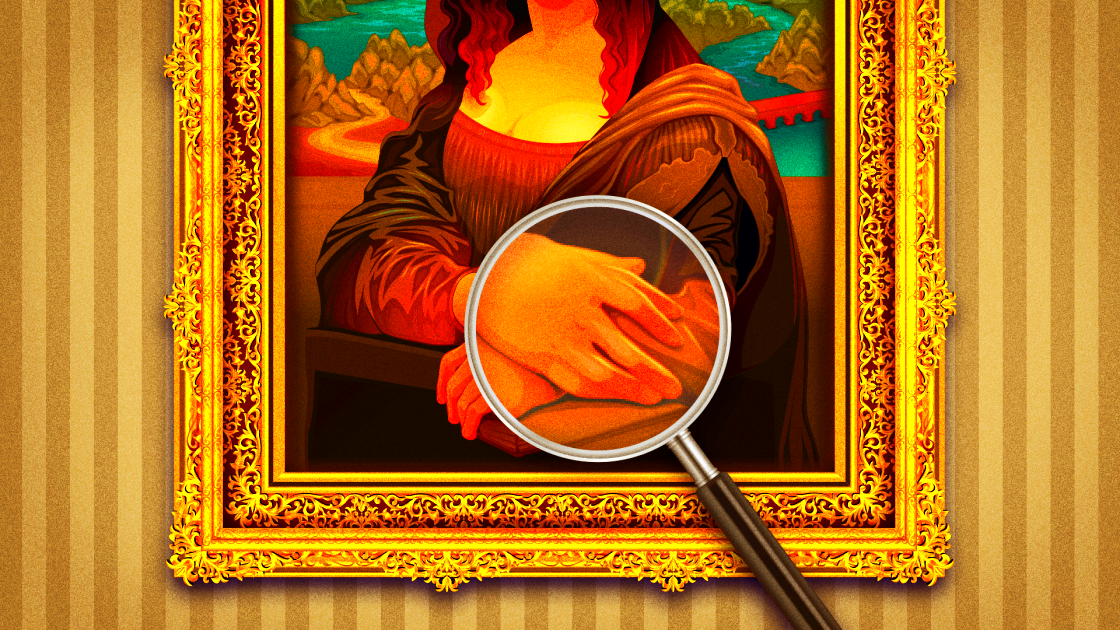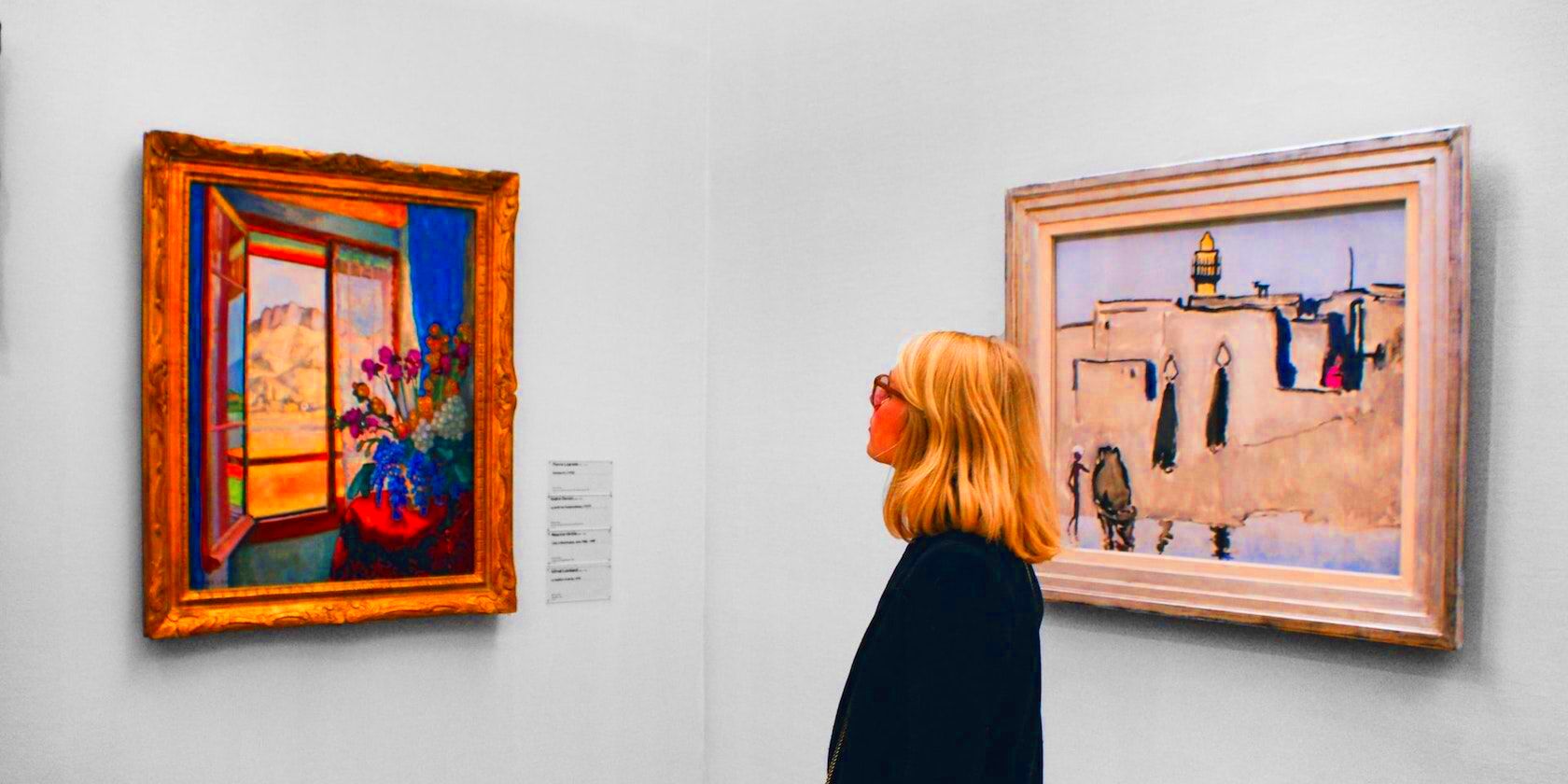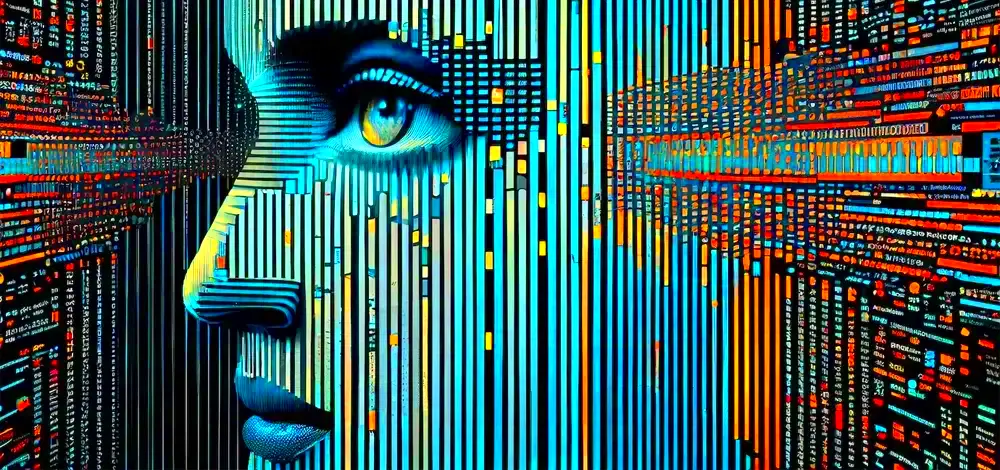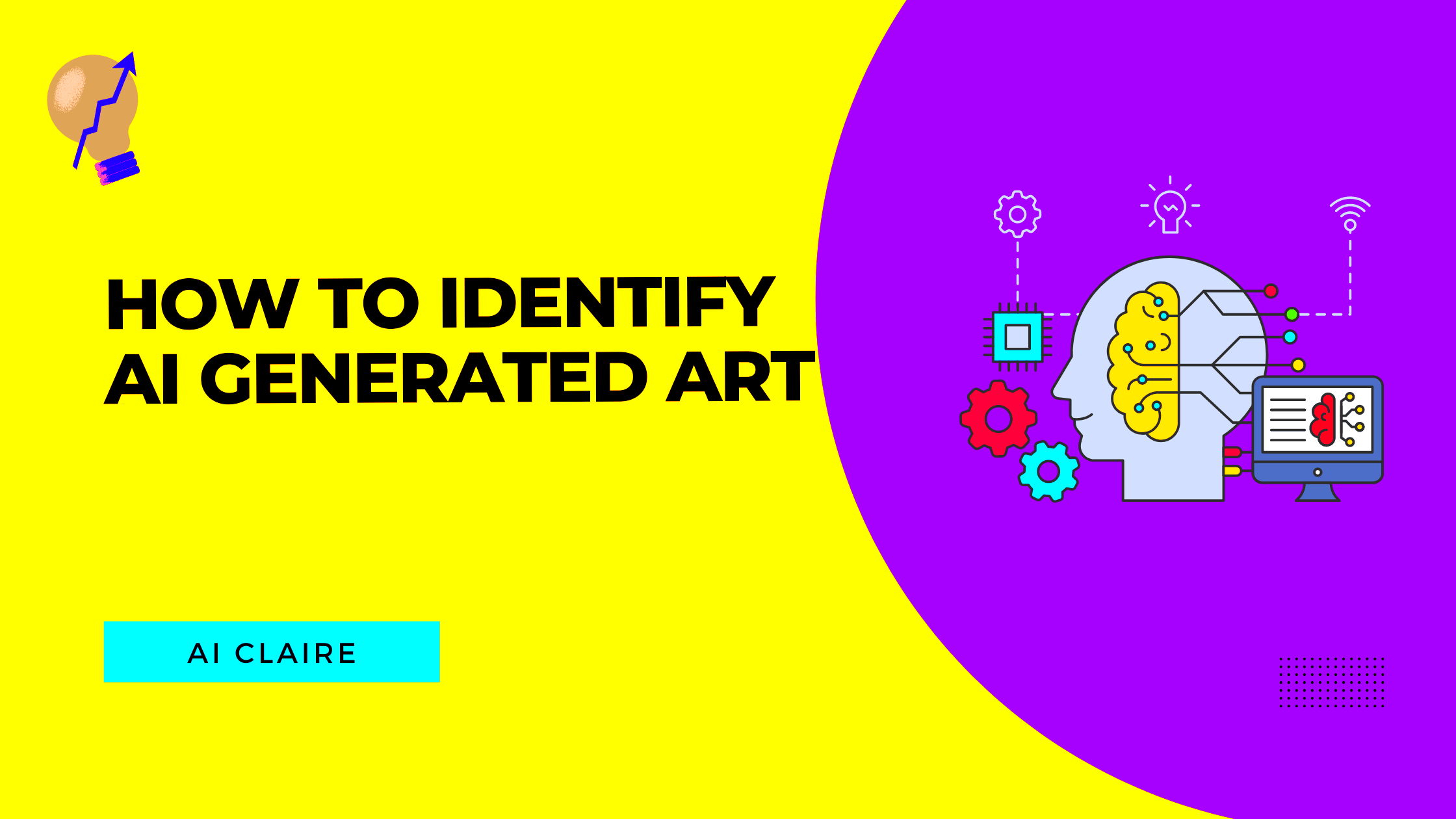AI-generated images have become a fascinating part of the digital world. They are created using artificial intelligence systems, often mimicking human creativity. Whether it's artwork, realistic photos, or even video game textures, AI is helping create visuals that look like they were made by a human artist. These images are generated using sophisticated algorithms that can process data and create something entirely new. As AI technology improves, it can generate visuals that are almost indistinguishable from real-life photos or hand-created artwork, which can be both exciting and concerning. The rapid advancement of AI in image creation raises important questions about authenticity and how we differentiate real from artificial visuals.
How AI-Generated Images Are Created

AI-generated images are created through machine learning models, specifically deep learning networks, that can understand and replicate visual patterns. The most common method used is Generative Adversarial Networks (GANs), which consist of two main components: the generator and the discriminator.
- Generator: This part creates images from random noise or specific input data. Its goal is to create images that look realistic to human eyes.
- Discriminator: This part evaluates the generated images and compares them to real-world images. It tells the generator whether its creation looks convincing or not.
As these networks train, they get better at producing images that are increasingly realistic. Over time, with enough data and processing power, AI systems can produce images that seem indistinguishable from actual photos. In addition to GANs, other models, like neural networks, are also used to generate images based on specific prompts. These prompts can range from text descriptions to existing images or even the style of famous artists.
Also Read This: Account Exit Strategy: A Step-by-Step on Cancelling Your AliExpress Account
Key Indicators of AI-Generated Images

While AI-generated images are becoming more realistic, there are still certain indicators that can help you spot them. Understanding these key features can make it easier to identify an image created by AI:
- Unnatural Lighting: AI struggles to recreate realistic lighting, especially in complex scenes. Shadows might look odd or too uniform, and the overall brightness might seem unnatural.
- Distorted or Missing Details: AI sometimes misses intricate details, like facial features, textures, or even reflections in mirrors. These may appear blurry or incomplete.
- Inconsistent Textures: AI often fails to replicate textures accurately. For example, skin might appear too smooth, or fabrics might not have the correct texture or shine.
- Unusual Backgrounds: AI can struggle with creating coherent backgrounds, especially in dynamic scenes. You might notice blurry or inconsistent elements that don't fit with the subject of the image.
- Odd Proportions or Anatomy: One of the biggest giveaways in AI-generated images is distorted proportions. Human or animal faces might have awkward features, or limbs could appear elongated or unnaturally shaped.
While these signs are common, AI technology is rapidly improving. In the future, it may become harder to identify AI-generated images, making it even more important to stay aware of the telltale signs.
Also Read This: Unlocking Communication: A Guide on How to Contact Sellers in AliExpress
How to Spot AI-Generated Images Using Visual Cues

AI-generated images can be tricky to spot, but there are several visual cues that can help you identify them. These images, though often realistic at first glance, tend to have subtle imperfections that give them away. Paying attention to these details can help you differentiate between genuine photos and AI creations. Let’s take a closer look at some of the most common visual cues you can look for:
- Inconsistent Lighting and Shadows: AI has trouble creating realistic light sources. You might notice shadows that don’t align properly with the subject or unnatural lighting patterns that make the image look off.
- Blurry or Messy Backgrounds: One of the easiest ways to spot AI images is by examining the background. If the background looks oddly blurry, distorted, or filled with random patterns, it’s likely AI-generated.
- Unusual Textures: Textures in AI images can appear too smooth or unnaturally shiny. For instance, skin might look almost plastic or metallic, and fabrics may lack the usual detail you'd expect from a real photograph.
- Weird Proportions and Anatomy: Pay close attention to facial features, hands, and limbs. In AI-generated images, body parts might be oddly shaped or disproportionate. For example, fingers could be merged or appear overly long, and eyes might seem too large or misaligned.
- Unnatural Reflections or Details: Reflections in mirrors, glass, or water are difficult for AI to recreate accurately. These can appear strange or inconsistent, which gives the image away as artificially created.
By training yourself to spot these visual cues, you'll get better at identifying AI-generated images as they continue to evolve and improve.
Also Read This: Resale Revolution: Selling Alibaba Products on Amazon with Ease
Using Reverse Image Search to Identify AI-Generated Images

One of the most effective ways to identify AI-generated images is through reverse image search tools. These tools allow you to track the origin of an image and determine whether it has been created or altered using AI. The process is simple and can be a great way to verify the authenticity of an
Here’s how reverse image search can help in identifying AI-generated images:
- Find the Source: By uploading the image to a reverse search engine like Google Images or TinEye, you can find out where the image originally came from. If the image is flagged as being from an AI-based platform, you’ll know it’s not a real photograph.
- Look for Similar Images: Reverse search results might show you visually similar images, helping you compare the image you’re examining with others that might provide clues about its origins. If you find variations of the same image but with slight differences, it's likely AI-generated.
- Check Metadata: Reverse image search tools may also display metadata related to the image, including its creation date, resolution, and other details. If metadata points to a specific AI tool, it can confirm the image was computer-generated.
Reverse image search won’t always give a definitive answer, but it can certainly help you spot patterns or lead you to websites where AI images are often shared, allowing you to make a more informed judgment.
Also Read This: Coin Chronicles: A User’s Guide to Using Coins on AliExpress
Why AI-Generated Images Can Be Deceptive
AI-generated images are becoming more advanced, making them increasingly difficult to distinguish from real-life photos. This creates a unique challenge, as AI images can be used to manipulate public perception, spread misinformation, or even create fake identities. Understanding why these images can be so deceptive is important, especially as AI tools improve and become more widely available.
Here are some reasons why AI-generated images can be so convincing:
- Highly Realistic Visuals: With technologies like GANs and neural networks, AI can create images that are nearly indistinguishable from reality. These images have fine details, lifelike textures, and perfect proportions that make them look real at first glance.
- Endless Customization: AI can generate images based on any prompt or input, making it easy to create highly specific visuals. For instance, you can generate images of people who don’t exist, historical events that never happened, or futuristic concepts that haven’t been realized yet.
- Manipulating Public Opinion: AI-generated images are often used in propaganda and fake news to deceive people. A well-crafted AI image can be used to create false narratives or manipulate how people perceive certain events or individuals.
- Rapid Evolution of AI Technology: As AI algorithms continue to evolve, they are becoming better at understanding human aesthetics, emotion, and behavior. This allows them to create images that not only look real but also evoke the same emotional responses as real-world photos.
- Lack of Transparency: When AI-generated images are shared online, they often lack clear labeling to indicate that they are computer-generated. This lack of transparency makes it even harder for the average person to identify whether an image is authentic or not.
As AI technology continues to improve, the ability to deceive through AI-generated images will only increase. Being aware of how these images are created and why they are so convincing can help you remain cautious and avoid falling for visual manipulation in the future.
Also Read This: Shipping Agents Unleashed: Getting a Shipping Agent on Alibaba
Tools to Help Identify AI-Generated Images
With the rise of AI-generated images, it’s becoming increasingly important to have tools that can help us identify artificial visuals. Thankfully, there are several online tools available that can help you spot these images. These tools rely on sophisticated algorithms and databases to detect common patterns in AI-generated content. Some of these tools are free to use, while others offer more advanced features at a cost. Here’s a look at a few popular tools you can use to detect AI-generated images:
- DeepAI Image Recognition: This tool uses machine learning algorithms to analyze an image and provide an assessment of whether it's AI-generated. It’s quick, easy to use, and can detect subtle clues in the image's structure.
- GAN Detector: Specifically designed to spot images created by Generative Adversarial Networks (GANs), this tool can give you insights into whether an image was created by AI-based platforms. It works well for spotting AI-created faces and artwork.
- Google Reverse Image Search: While not specifically built for identifying AI images, Google’s reverse image search can help you trace an image’s origin. If it’s found in AI-related sources or platforms, it may be AI-generated.
- FotoForensics: This tool helps identify whether an image has been manipulated or created by AI. It provides detailed analysis of image metadata and compression data to flag possible alterations.
- AI Image Detector by Sensity: This tool analyzes and identifies deepfakes and AI-generated images. It uses artificial intelligence to look for subtle clues that distinguish human-created and AI-generated images.
Using these tools in combination can give you a clearer picture of whether an image is AI-generated. As AI technology continues to evolve, so will the tools to identify them, ensuring you stay ahead in detecting artificial content.
Also Read This: More is More: Maximizing Your Use of AliExpress Coins
Best Practices for Using AI-Generated Images
AI-generated images offer endless creative possibilities, but using them responsibly is key to maintaining credibility and trust. Whether you’re using them for content creation, marketing, or personal projects, it’s essential to follow best practices to avoid misleading your audience or misusing the images. Here are some guidelines for responsible use:
- Clearly Label AI-Generated Content: One of the most important best practices is to always label AI-generated images as such. Transparency helps maintain trust and ensures that your audience knows when an image is not real. This is particularly important in areas like journalism and advertising.
- Avoid Deceptive Uses: Never use AI-generated images to mislead people or manipulate emotions in a way that’s dishonest. For example, don’t use AI faces of fake individuals in news articles or ads without clear context.
- Respect Copyright and Licensing: Even though AI generates images, the underlying technology and data used to create them can have restrictions. Always check the licensing terms of the tools and platforms you’re using to create AI-generated content to avoid copyright infringement.
- Be Aware of Ethical Concerns: AI-generated images can sometimes be used for unethical purposes, such as creating deepfake videos or fake identities. Be mindful of how you use AI visuals and ensure they align with ethical standards.
- Use for Creative Projects: AI-generated images are great for creative projects where the goal is to create unique, conceptual visuals. These can be used in art, design, or speculative projects where imagination is the key.
- Check for Accuracy: When using AI-generated images to represent real-world people or events, make sure they’re accurate and not misleading. For example, if you’re creating a fictional historical scenario, ensure the generated visuals match the intended look and feel of the time period.
By following these best practices, you can responsibly use AI-generated images while maintaining transparency, creativity, and ethical standards.
Also Read This: Coin Control: Buying with Coins on AliExpress Demystified
FAQ
Q1: How do I know if an image is AI-generated?
A1: There are several ways to spot AI-generated images, such as looking for odd lighting, strange proportions, blurry backgrounds, or missing details. Tools like reverse image search and AI detection software can also help identify if an image was created by AI.
Q2: Can AI-generated images be mistaken for real ones?
A2: Yes, AI-generated images are becoming increasingly realistic, which makes it harder to distinguish them from real photos. However, subtle imperfections like unnatural textures, unrealistic shadows, or strange reflections can be giveaways.
Q3: Are AI-generated images copyrighted?
A3: It depends on the tool or platform used to generate the image. Some platforms hold copyright over the AI-generated images, while others allow users to claim ownership. Always check the licensing terms of the AI tool you’re using.
Q4: Can I use AI-generated images for my business?
A4: Yes, you can use AI-generated images for business purposes, such as marketing, design, or social media content. However, always ensure you follow ethical guidelines, avoid misleading visuals, and disclose when images are AI-generated to maintain transparency.
Q5: Are there free tools to detect AI-generated images?
A5: Yes, there are free tools like Google Reverse Image Search and FotoForensics that can help detect AI-generated images. However, more advanced tools like Sensity or GAN Detectors may offer additional features at a cost.
Q6: Why should I be concerned about AI-generated images?
A6: AI-generated images can be deceptive, especially if used to manipulate public opinion, spread misinformation, or create fake identities. Being able to spot these images is crucial for ensuring authenticity in digital content.
Conclusion
AI-generated images are a rapidly advancing technology that brings both exciting possibilities and potential challenges. As AI tools become more sophisticated, the ability to create realistic and convincing images will only improve. While this opens up new opportunities in art, design, and digital media, it also raises important questions about authenticity, ethics, and the potential for deception. Being able to spot AI-generated images—whether through visual cues, reverse image searches, or specialized tools—is crucial in an era where digital manipulation is becoming more common. By staying informed and using the right tools, we can navigate this new landscape responsibly, ensuring transparency and maintaining trust in the digital content we consume and create.











